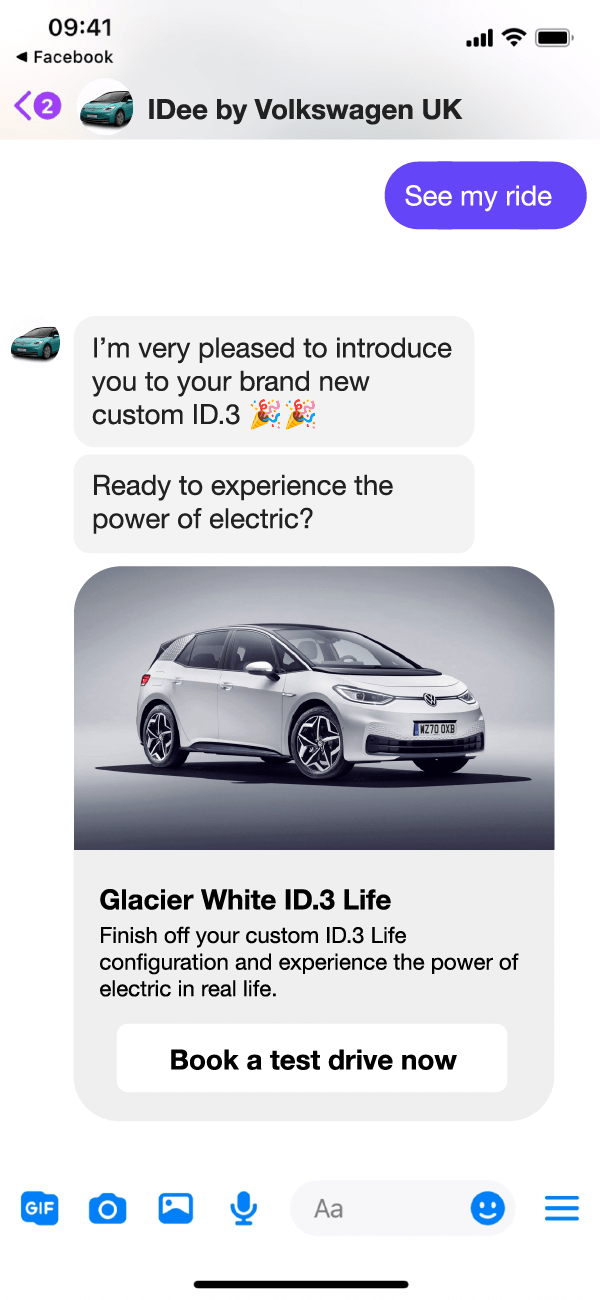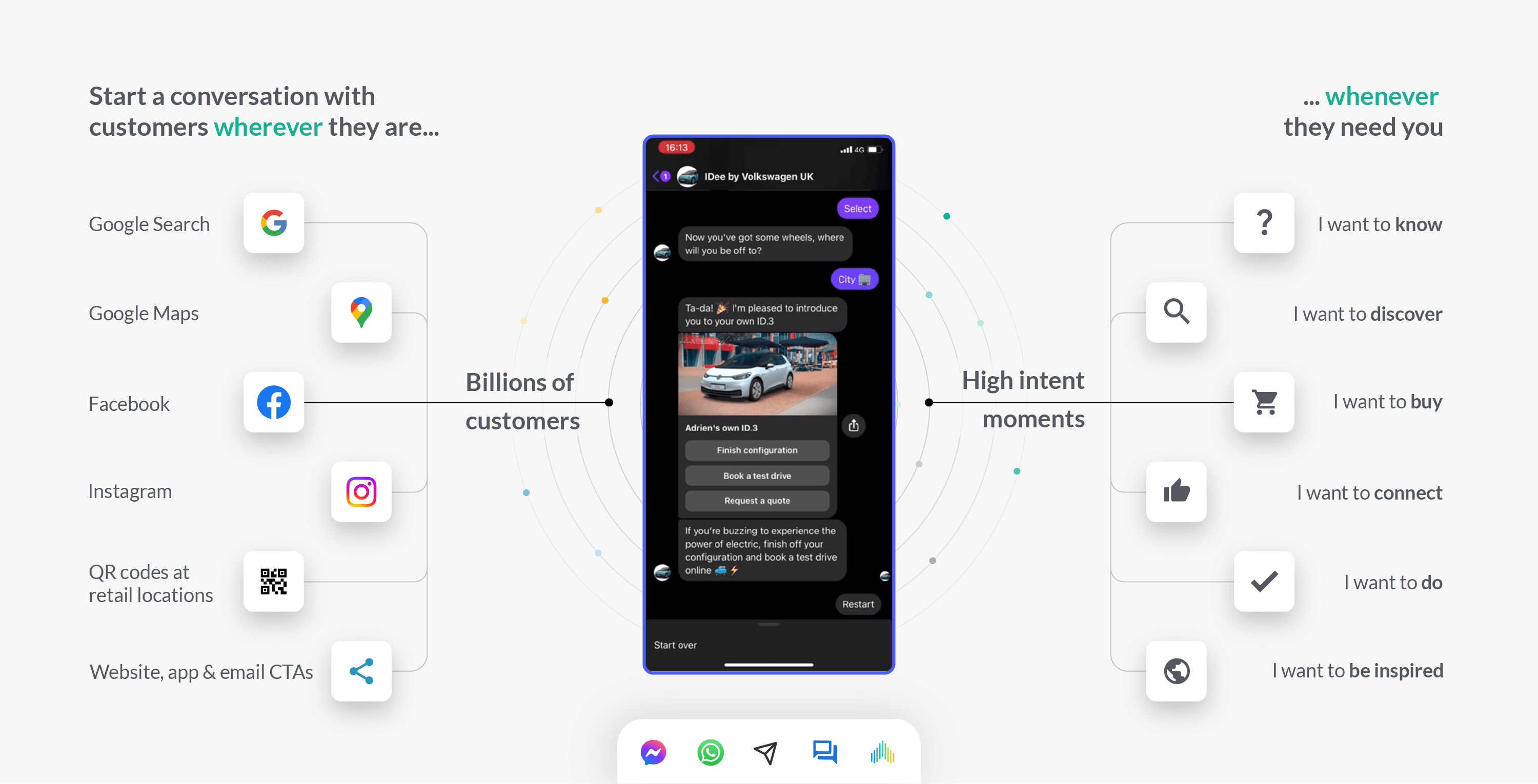Get more qualified leads at lower cost with one to one automotive buyer journeys on Messenger
Here’s the messaging playbook VW and Ford use to achieve:
- 3x higher CTR vs on site car configurators
- 38% relative lift in purchase intent

Here’s the messaging playbook VW and Ford use to achieve:

Auto marketers face long sales cycles with convoluted and fragmented buyer journeys.
Since vehicle purchase is a high-value, big decision, auto brands often lose leads in the middle of the purchase journey.
Fierce competition for digital attention, increasing ad prices and privacy updates further challenge auto marketers to bring the customer journey online and find new ways to engage auto buyers.
Simplify digital touchpoints into one easy to track conversation to accelerate the purchase journey.
Collect zero party data signals to improve lead quality, build segments, and reduce your cost per action.
Engage in a two way conversation that adds value and educates buyers about new models.
Book more test drives by converting users to message channel with higher reachability than phone or email.
Grow new seed audiences and active existing lead lists on their preferred channel.
How exactly can messaging achieve the above? Let’s dive into how it works at each step of the customer journey.
Here’s an overview of what the customer journey looks like from start to finish for this messaging playbook. It’s a best practice example from one of our customers.
It shows you how to send audiences into the messaging channel, how to engage and qualify them, typical conversion paths, and then how to re-engage them to increase customer lifetime value.

with paid ads, organic search and social entry points, plus owned and offline channels.

users to understand their individual needs and personal driving preferences.

with personalized buyer journeys based on zero party data shared in chat.

on their preferred messaging app to drive ongoing engagement and upsell them.

with tailored and timely offers to book more test drives, grow sales, and boost customer LTV.
Now that the steps of the customer journey are clear, let’s look at the type of customer data that is captured at each step.
Engaging and qualifying customers in chat with a guided experience helps you capture zero party data on their preferences. You can use this to personalize your buyer journey in real-time.
Below is an example of how to structure the data from chat so you can build audience segments to re-engage customers one to one with push notifications from the messaging app.
This helps maximize conversions during the first engagement. But is also acts as the foundation for your re-engagement strategy. Each data point helps you build hyper-specific segments to personalize follow-up messages.
Segments you build in messaging channels can be continuously monetized over time. Kind of like email marketing, except that comparison doesn’t due the performance of messaging channels justice.
Re-engagement messages on messaging apps have open rates of around 80% with 25-45% CTR on average depending on the level of personalization.
Compare that to average email performance and you start to see why messaging can drive such a big revenue impact.
Volkswagen books test drives for their new electric vehicle models by guiding customers to find the best car for their personal needs and driving habits.
higher CTR
uplift of Messaging agreement vs BAU
Volkswagen launched an automated customer experience on Messenger bot to increase test drives for their new electric vehicle and guide customers to find their ideal car based on their preferences.
The auto brand used paid and organic entry points to grow their audience and used Messenger as a channel to simplify digital touchpoints into one easy to track conversation. This allowed Volkswagen to capture valuable customer insights and send personalized offers based on customer needs.
High value items, such as vehicles, require customer education. Volkswagen’s Messenger bot provides prospects with assistive shopping experiences. This enabled the company to accelerate consideration phases and purchase decisions.
Using the Messenger bot, Volkswagen achieved:
Once you’ve proven the impact, how can you scale it?
Messaging playbooks help to quickly validate messaging as a revenue channel for your business.
Once you’ve validated the impact of your use case, you can start scaling this to new channels and growing your audience faster by introducing new entry points.
Here’s an overview of how you can connect with customers where they are, in the high intent moments that matter.

